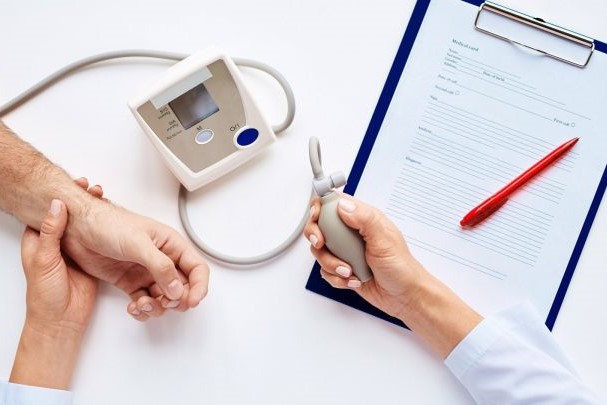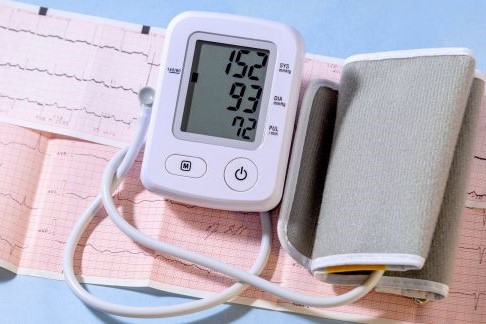
The decalogue for measuring blood pressure: general indications and normal values
Measuring blood pressure regularly is one of the main rules for preventing and recognising possible hypertension: let’s find out what the normal values are and the general indications for measurement
What is blood pressure?
Arterial pressure is the force with which the heart pushes blood through the vessels of the cardiovascular system: it therefore depends on the amount of blood pumped and the resistance that may obstruct the flow.
How does the circulatory system work?
The blood circulation system depends on the heart, which functions as a central pump, and the tubes through which the blood flows, which are divided into arterial vessels (with flow from the heart to the various tissues) and venous vessels (with flow from the extremities to the heart).
The action of the heart has a cyclical pattern which, between beats, alternates between the contraction of the heart muscle (systole) and its release (diastole): this is why blood pressure is not constant, but is measured in maximum, i.e. systolic pressure, and minimum, i.e. diastolic pressure.
What are normal blood pressure values?
Normal blood pressure values are between a maximum of 140-100 mmHg and a minimum of 90-60 mmHg; above these values we speak of hypertension or, more commonly, high blood pressure.
With the exception of particular situations in which high blood pressure can be expected (such as stress, physical exertion, sexual activity), one speaks of the pathology of hypertension when values rise steadily and continuously.
Hypertension can be
- primary (or essential) when it is caused by non-modifiable factors such as age and family history, or by modifiable factors such as lifestyle and diet, and is the most frequent form in the population;
- secondary, when it is caused by other known pathologies, such as kidney disease, obesity, and sleep apnoea syndrome.
How is blood pressure measured?
Since hypertension is a pathology that, if identified at an advanced stage, can be difficult to curb and it is not always possible to lower the risk of cardiovascular disease, it is advisable to have an early diagnosis through prevention and periodic monitoring.
The ten rules for measuring blood pressure
Here is a decalogue with indications on how and when to check blood pressure values:
- Leave the patient in a quiet room for a few minutes before the blood pressure measurement.
- Take at least two measurements 1-2 minutes apart and take another measurement if the first two differ significantly.
- Use a standard sphygmomanometer cuff (12-13 cm long and 35 cm wide): use a wider and narrower cuff for arms that are respectively fatter or thinner than normal; use the smaller cuff for children.
- Have the patient’s arm rest so that the pulse is always level with the heart.
- At the first check-up measure the pressure in both arms to reveal any differences due to peripheral vascular dysfunction.
- Measure blood pressure 1 minute after and 5 minutes after resuming the upright position in older people, diabetics and in all cases where orthostatic hypotension may be frequent or suspected.
- After the second measurement in the sitting position, measure the heart rate by feeling the pulse for 30 seconds.
- Under certain conditions, the blood pressure measurement may be distorted: taking medication or certain substances (coffee, tea, tobacco smoke) may be one of the causes. It is therefore advisable to take the measurement at least three hours after coffee, tea or tobacco smoke.
- Measuring blood pressure at the doctor’s office can lead to stress that causes it to rise; in this case, it is useful to carry out 24-hour blood pressure monitoring (Holter Pressor).
- High blood pressure is said to be present when it is found to be above normal in at least two or three check-ups about a week apart.
Read Also
Emergency Live Even More…Live: Download The New Free App Of Your Newspaper For IOS And Android
Holter Blood Pressure: Everything You Need To Know About This Test
Blood Pressure Emergencies: Some Information For Citizens
Alpha-Blockers, Drugs For The Treatment Of High Blood Pressure
Twenty-Four-Hour Ambulatory Blood Pressure Monitoring: What Does It Consist Of?
Full Dynamic Electrocardiogram According To Holter: What Is It?
Hypertension: Symptoms, Risk Factors And Prevention
High Blood Pressure, When To Seek Emergency Care
Organ Complications Of Hypertension
How To Conduct Antihypertensive Treatment? An Overview Of Drugs
Blood Pressure: What It Is And How To Measure It
Aetiological Classification Of Hypertension
Classification Of Hypertension According To Organ Damage
Essential Hypertension: Pharmacological Associations In Antihypertensive Therapy
Treatment Of High Blood Pressure
Heart Failure: Causes, Symptoms And Treatment
The Thousand Faces Of Vascular Disease
Blood Pressure: When Is It High And When Is It Normal?
First Aid, When Is It An Emergency? Some Information For Citizens
Hypothermia Emergencies: How To Intervene On The Patient
Emergencies, How To Prepare Your First Aid Kit
Seizures In The Neonate: An Emergency That Needs To Be Addressed
Epileptic Aura: The Phase Before A Seizure
Seizures In Children: Types, Causes And Treatments Of Seizures
Spinal Immobilisation Of The Patient: When Should The Spine Board Be Put Aside?
First Aid And Medical Intervention In Epileptic Seizures: Convulsive Emergencies
Airway Management After A Road Accident: An Overview
Ambulance: Common Causes Of EMS Equipment Failures — And How To Avoid Them



